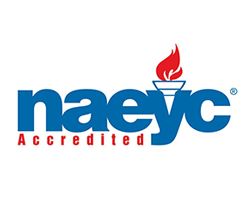
Development is a key factor to early childhood for any child. When they are young, their cognitive reasoning, motor skills, and core competencies are developing at a fast rate, just as their bodies do. When working with growing children, it is important that we understand the best ways to praise a child as well as correct them. The NAEYC believes that just praising a child with “good job” without expanding on the work that the child did can be detrimental to their ability to understand what exactly counts as a good job. As we often do, we tend to praise children for many of their accomplishments, which is what we should do so that they associate their behavior as something that should occur. However, rather than just praise them by saying “good job,” work on your ways of appreciating what they have done.
-
Sentence starters
- Notice what the child did and build a lesson from it. Ask them what they did or what you noticed them doing.
-
Give feedback about their effort
- Even if they don’t complete something, notice they did their best and have been able to succeed thus far. Provide encouragement about what they have accomplished.
-
Let them talk about what they did
- Drawings, writing, buildings, there is always something behind it. Encourage them to talk to you and be open about what they saw in their imagination as they were working.
-
Details
- Address anything you see: shapes, lines, textures, forms, anything that the child may have done.
-
“Thank you”
- Teach them manners! Let them know you appreciate the help they did. It will encourage the behavior and allow them to understand why it is something that is good. Explain why helping at that moment was the right thing to do.
-
Identify a goal before responding to the child
- What are you acknowledging within the child?
- Positive behavior
- Kindness
- Problem-solving skills
- Address your response based on what they did such as helping a friend instead of running ahead.
- What are you acknowledging within the child?
-
Nonverbal feedback
- A smile, a nod, a wink, something to let them know you see their hard work can pay off for the child as well. It does not always need to be verbal reinforcement for the child to understand.
-
Mirroring
- When a child is proud of something they have done, smile back and share their excitement, especially if it is their first time accomplishing it on their own. It shows that they are gaining confidence and reinforcement is everything.
-
Highlight work
- Hang artwork in the classroom
- Show and tell
- Have photos of the children around in newsletters and blogs
-
Encourage
- Don’t just stop at reinforcing behaviors. Suggest other things as well that could expand on what they have already accomplished to build more experiences.
Early childhood is when children learn “right from wrong” or, better put, the actions expected of them in society. It is up to us as parents and teachers to help reinforce the positive behaviors that we want our children to aspire to day to day. It may seem more natural to stop them doing bad things, but highlighting the positive actions will have a bigger impact on the child.





